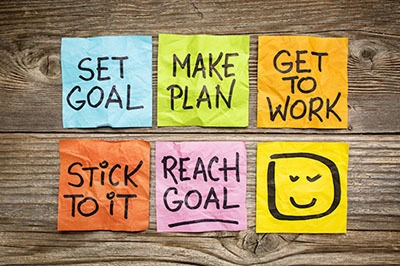#TrueTalkTuesdays 36
“There is nothing noble in being superior to your fellow man; true nobility is being superior to your former self.”
Ernest Hemingway
We sometimes forget to ask ourselves this all-important question.
Being on top of the food chain, we have the unique ability to stop, and self-reflect – a luxury most animals on this planet will never have.
Rather than struggling to survive each day by escaping predators, foraging for food, and looking for shelter, most of us are fortunate that such things are pretty much taken care of. Sure we have to work, but it sure beats the hell out of out running a pack of hungry wolves, and playing survivor in the wilderness!
But it’s not all good. Many can fall into the trap of just “coasting” our way through life. After all, our biological objective is just to survive and procreate. With those things being quite simple to achieve in modern society, it is easy to just go through the motions and live on auto-pilot.
This “comfort trap” applies to our martial arts life as well. People work hard to get good at some aspect of the martial arts, and once they do they just stay in their lane.
Don’t be that person. You should always be working on something.
As a coach, I sometimes forget to remind people this in class. I should be able to go up to any student and ask them what they are working on, and have them give me a concise statement on what they are focusing on improving.
If I was to ask you that question and you are stumped – that is a problem. You need to do some self reflection, and figure out what part of your game needs to be improved.
The easy way to identify this is to put yourself in your opponent’s shoes, and ask yourself what strategy you would implement to beat yourself. This “out of the box” thinking helps to identify your weaknesses, and gives you a better perspective on what you need to improve.
Once you identified a problem area, then you set a goal that is tangible, with a timeline on when you can achieve a positive result, with some milestones to let you know you are on the right path. After that, set a plan of action on how you will make these improvements. Most of the time, this is going to require learning some new techniques, and working on implementing them and making some part of your arsenal.
For example, suppose you figured out that your weakness is bottom half guard. Every time you get there, you end up getting squeezed, passed, and then put in a world of trouble.
So the problem is that your half guard is not up to par. Now there are a few ways to approach this problem.
One, is to avoid getting in the position entirely. This can mean working other guards like closed, spider, open, butterfly, etc. Or it can mean getting up to your feet right away and never staying on your back.
Second, is rather than avoiding half guard, you embrace it an make it a good position for yourself. In the above, the first issue was getting squeezed, which means improper framing. So learning how to frame properly (using arms and shins) will help manage distance and keep your opponent at bay. Another aspect of the problem was getting passed, which means at some point your legs failed you. So another thing to work on would be better retention with your legs and hips, and learning how to recover and scramble out of near pass situations.
So we have 2 approaches to the problem, each with 2 possible ways of addressing them. Depending on your current skill set, your way of fixing this problem will vary.
Regardless of your chosen solution, you now need to be able to measure improvement. In this case, I would measure by the amount of successful defenses versus attempts. So it would be good to have one training session where you keep track of how many times you were put in half guard versus guard passes.
That would give you a baseline metric. Say it was a 60% success rate. You might say then that you want it to be 80% by the end of a certain time period (say a month).
Now we have a problem, a solution, a way of measuring improvement, and a deadline – that is the beginning of a well defined goal. The next steps are to begin implementing your solution in training. I find the best way of doing that is by forcing yourself into the situations where your problems are at.
Most people when training stay clear of their weaknesses. But to make improvements, you have to expose your weaknesses repeatedly. I use situational drills to accomplish this when possible, and if not I just start live rounds in the problem area. The more time you can spend there, the more likely you will be able to implement your solution and improve your abilities.
Sometimes it doesn’t work though. This can be for a few reasons. If you picked a particular technique or strategy, perhaps you understood it wrong, or your training partners have a strong counter that is foiling you. Either way, you may need help getting a better understanding of the technique so you can implement it better.
Another reason it may fail is because you had a bad solution. This can happen, especially with strategic solutions. You might have thought you could beat a striker with just a pure wrestling game plan, but then it turns out they have a good counter wrestling game and just pieced you up from the outside.
Unfortunately, that is just part of the experience that you will need to learn from and adapt. All knowledge is useful for learning, just like when Thomas Edison said he didn’t fail to make a light bulb 10,000 times; rather, he learned 10,000 ways NOT to make a light bulb. Sometimes knowing what doesn’t work is just as important as knowing what does.
This can become a process of trial and error, so you have to be patient with yourself and avoid getting your ego involved. Perseverance is key here, because you are purposely putting yourself in a vulnerable position. Hopefully you see it through to the end to achieve your goal.
What do you think? Do you agree or disagree?
Comment with your take on this. And if you like this article, please do me a solid and share it with your friends. Thanks!




AGREE
I agree.